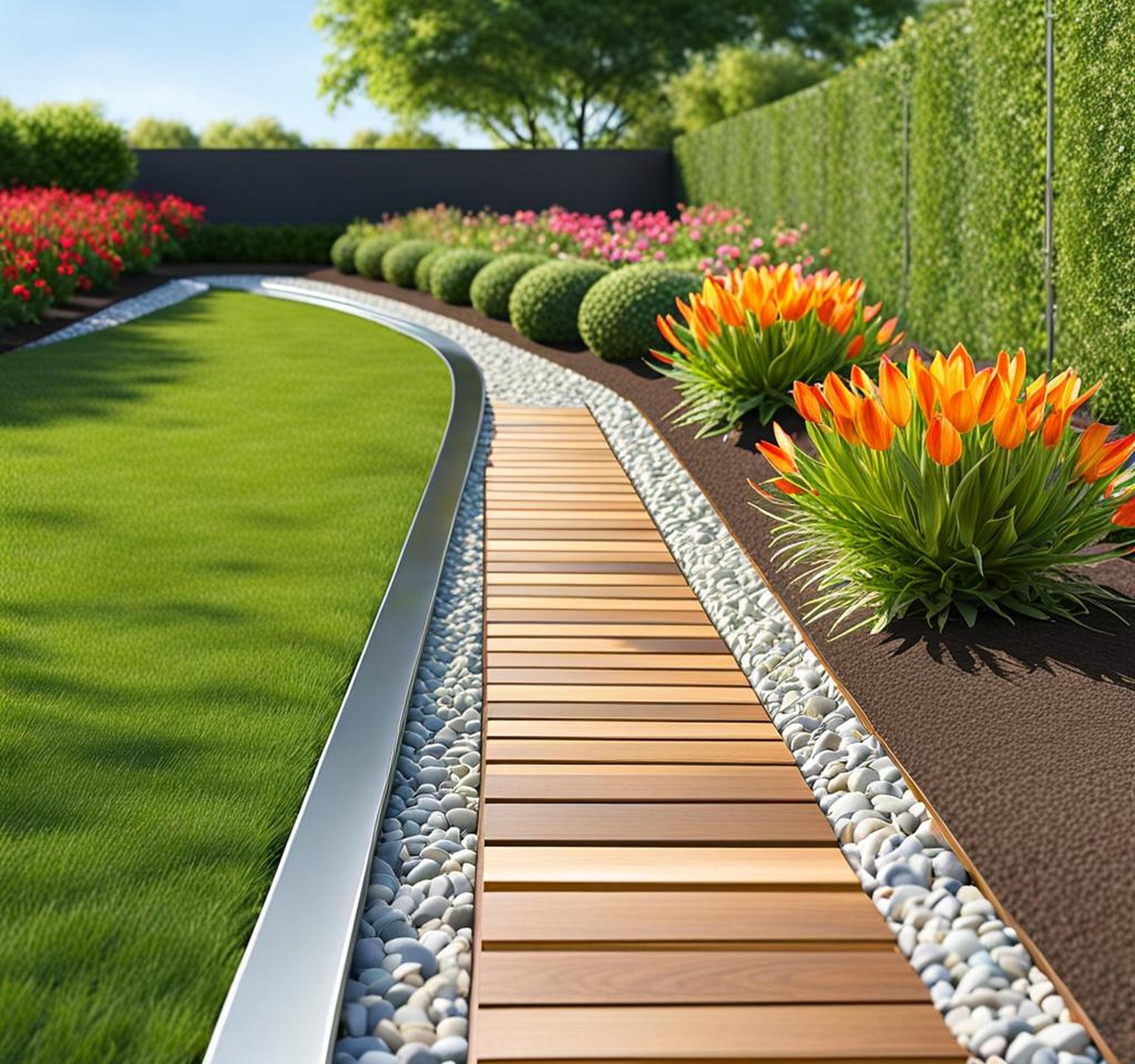A beautifully defined garden border can take your landscape to the next level. The right edging lends polish, reinforces the garden beds, and makes plantings pop. With so many materials and options to choose from, you’re sure to find creative borders to suit your style and budget.
Popular Materials for Garden Borders
Natural Stone
Natural stone makes a gorgeous border that can be tailored to your landscape. Granite, limestone, and fieldstone exude a timeless elegance, while slate brings rich color and texture. To install a stone edge, dig a shallow trench, line with landscape fabric to discourage weeds, and place your preferred stone along the trench. Use larger cuts on the outer edge for stability. Stone’s durability comes with higher cost and installation labor.
Plants
Plants like boxwood, lavender, and succulents make excellent living borders. They define spaces with natural style. Boxwood offers a crisp, sculpted edge, while lavender’s long blooming season provides non-stop color. Succulents thrive in drought, needing little care. Space plants close together, trim periodically to maintain shape. Plants work best for softening hardscape edges. Ongoing pruning and replacing dead plants are cons.
Wood
Wood borders lend a natural vibe and match any style. Paint, stain, or allow wooden sleepers and edging to weather gracefully. Install sleepers by digging a trench, lining with landscape fabric, and anchoring sleepers in place. For a sleek look, use thicker planks. Choose naturally rot-resistant wood like cedar. Wood requires periodic sealing, repair of raised planks.
Gravel
A gravel border provides clean definition at a reasonable cost. It offers a crisp edge against structures while allowing rainwater flow. Use 1-3 inch river rock or pea gravel. Dig a 3-4 inch trench, line with landscape fabric, and fill with preferred gravel. Tamp down. Pros are easy installation and nice drainage. Gravel scatters easily, requires occasional weeding.

Metal
For modern flair, try a metal garden edge. Corrugated steel offers an industrial vibe, while corten steel develops a natural rusty patina. Or go sleek with an aluminum border. Painted sheet metal can match any color scheme. Bury at least 2 inches for stability. Metal edges demand little care. They can be pricey and prone to dents.
Budget-Friendly DIY Options
With creativity, you can define tidy borders without spending a fortune. Upcycled items like logs, oars, and repurposed bricks make eco-friendly edging. Painting cinder blocks, wood slices, or tin cans creates a customized edge. For a bold look, stencil or paint concrete blocks placed along the bed.
Prefabricated Borders
Plastic, rubber, and metal prefab borders offer an instant edge. Their lightweight, interlocking or flexible designs make for easy DIY installation. Most need no special tools. Choices like BioBarrier weed barriers or interlocking paver edging blocks work for all bed shapes. Consider durability and ease of curving when comparing options.
Key Considerations
When planning borders, consider factors like:
- Scale proportionate to beds and surroundings
- Blending with home architecture and garden style
- Lawn and bed height differences
- Ongoing maintenance requirements
- Creative shapes and designs for visual interest
Take care to properly prepare soil and install edging for longevity. Keep lawn edged back, remove weeds promptly from borders. Mulching beds also keeps edges tidy.
Breathe new life into tired borders with simple upgrades. Add plants like ornamental grasses for texture contrast and color. Introduce rocks, gravel, or mulch to refresh the look. Widen beds by extending sleepers or edged. Reshape formal curves into free-flowing ones by tweaking prefab borders. Keep plants trimmed along the edge for a neat appearance.
The right border polishes your garden, keeps plants in bounds, and satisfies visually. With this array of materials and ideas, you can create a defined edge to elevate your landscape on any budget. Take time to consider your options, and transform those garden borders into a beautiful showcase.
